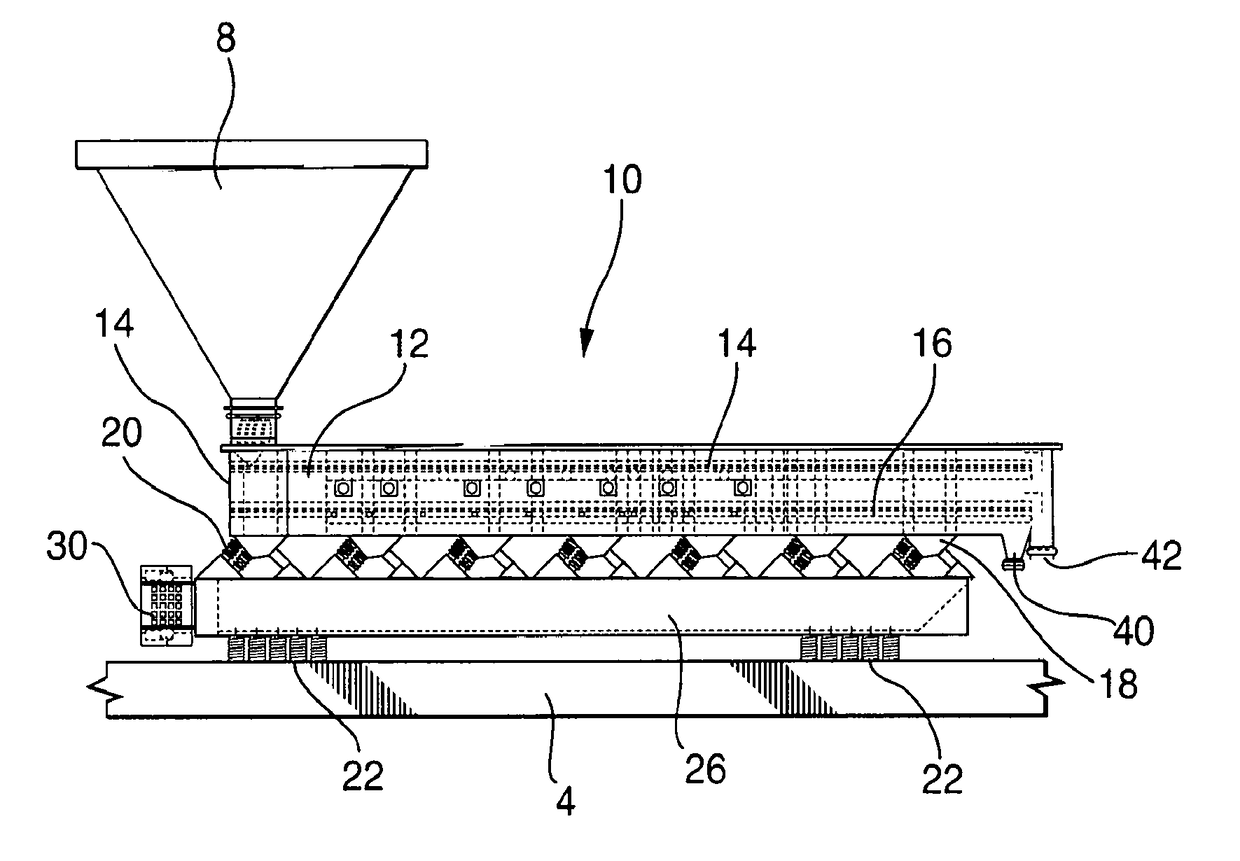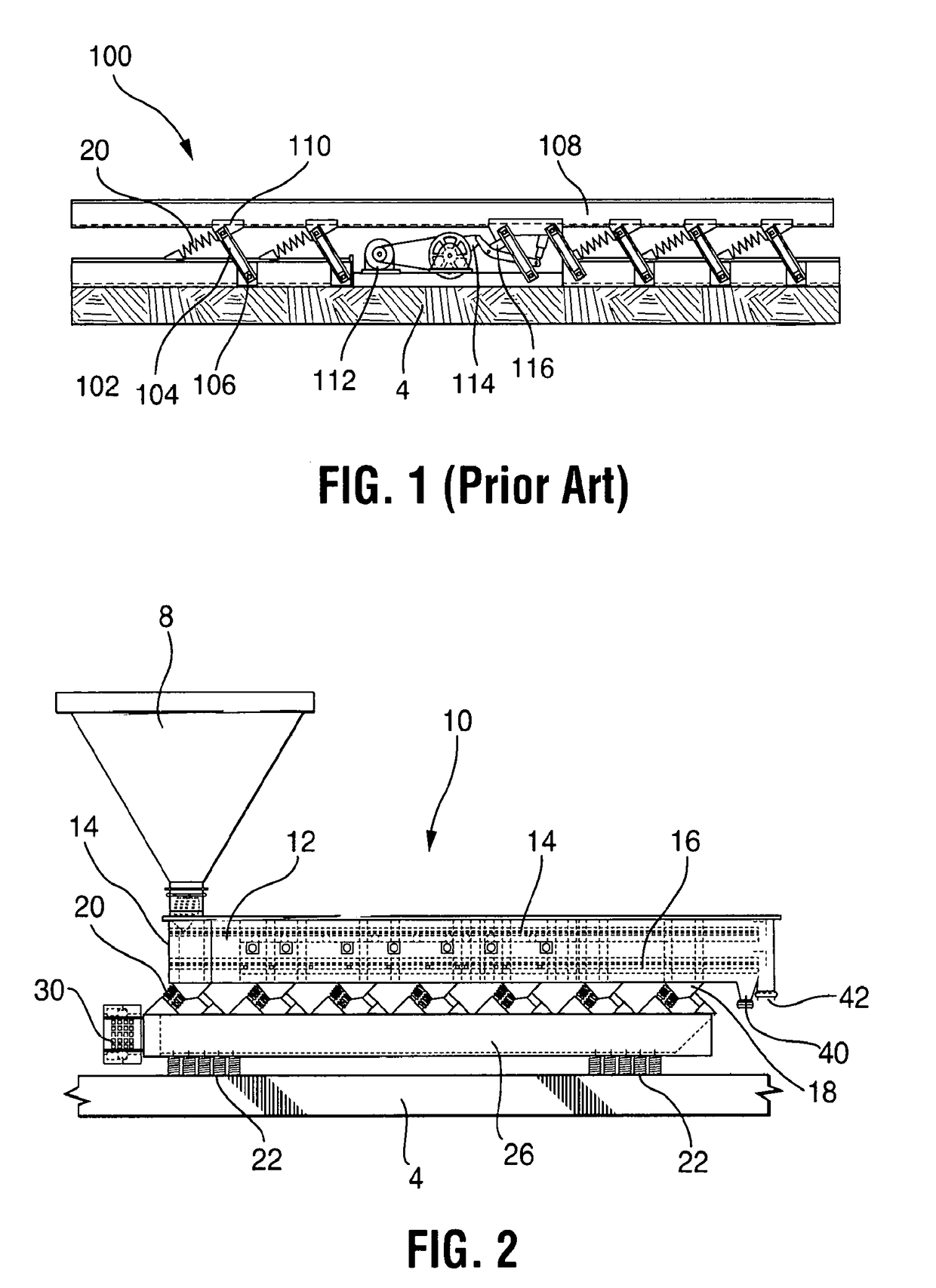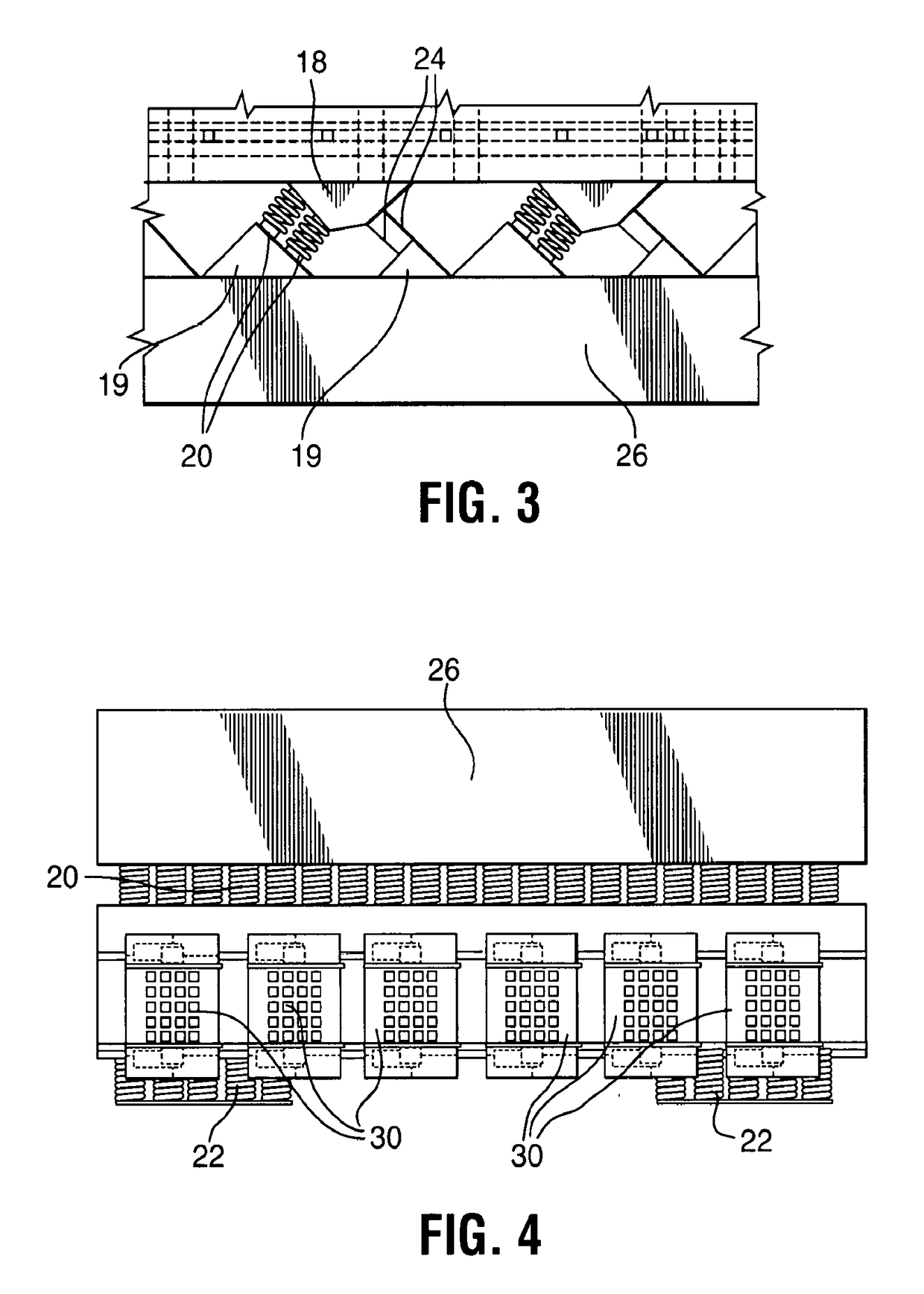Vibrating screening feeder and method of use
a technology of vibrating screen and feeder, which is applied in the direction of grain treatment, transportation and packaging, light and heating equipment, etc., can solve the problems of high energy loss of electromagnetic vibrators, limited feeders, and no success of these types of vibrators
- Summary
- Abstract
- Description
- Claims
- Application Information
AI Technical Summary
Benefits of technology
Problems solved by technology
Method used
Image
Examples
Embodiment Construction
[0071]As shown in the FIGS. 1-17, a vibrating screening feeder system 1 includes a vibratory storage bin 8 feeding a vibrating screening feeder unit 10 feeding and crusher 70 for oversized material. The intermediate storage bin 8 is positioned above the vibrating screening feeder 10 connecting the bin outlet 102 to the feeder inlet interfacing chute 104. The size of the bin 8 is determined by the throughput to maintain a maximum feed rate to the vibratory screening feeder 10 and ensure an appropriate amount of storage to enable it to continuously operate at its rated TPH (ton per hour) capacity. The bin's outlet 102 is positioned close to the feeder inlet 103 separated by the feed plate 105. Preferably the bin 8 is a vibratory bin or hopper having the capability to shake accumulations or bridging particles from the sidewalls to effect a smooth flow of feed to the vibratory screening conveyor 10. The following U.S. patents are incorporated by reference herein are some of the vibrator...
PUM
 Login to View More
Login to View More Abstract
Description
Claims
Application Information
 Login to View More
Login to View More - R&D
- Intellectual Property
- Life Sciences
- Materials
- Tech Scout
- Unparalleled Data Quality
- Higher Quality Content
- 60% Fewer Hallucinations
Browse by: Latest US Patents, China's latest patents, Technical Efficacy Thesaurus, Application Domain, Technology Topic, Popular Technical Reports.
© 2025 PatSnap. All rights reserved.Legal|Privacy policy|Modern Slavery Act Transparency Statement|Sitemap|About US| Contact US: help@patsnap.com



